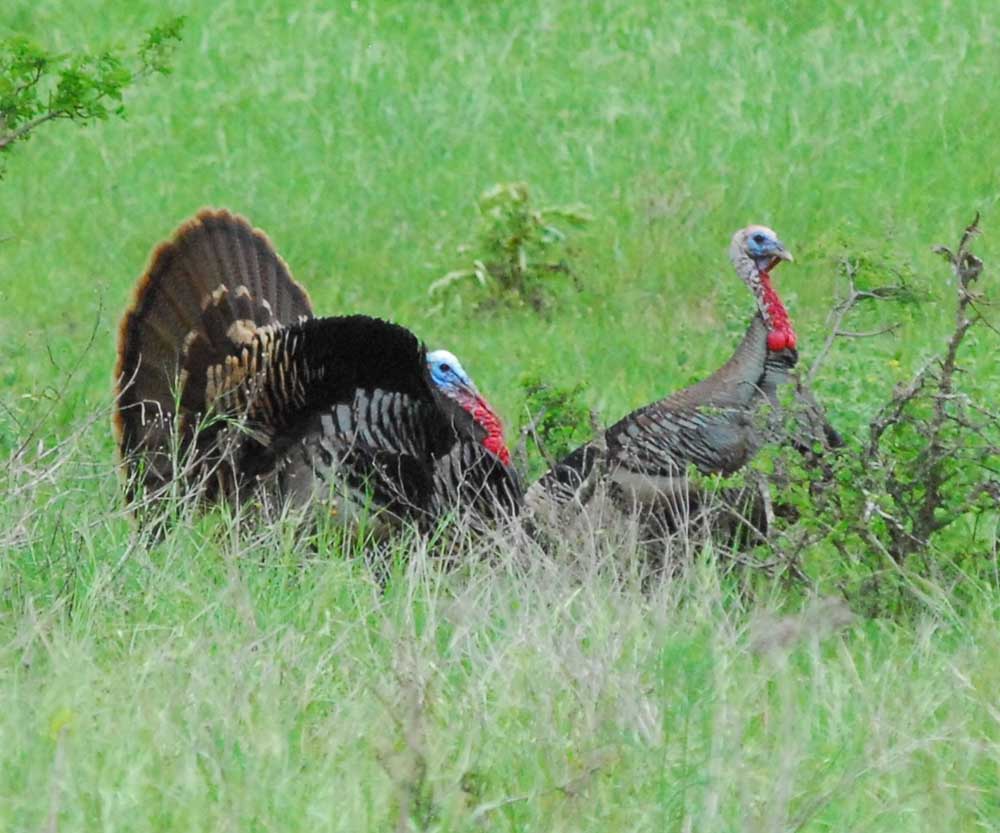Spring Fever: Gobbler numbers should be good for Rio Grande turkey season
Published 9:30 am Friday, March 14, 2025

- The spring season for Rio Grande turkeys can be one of the most interactive hunts in Texas as hunters attempt to call gobblers within shotgun range. (Steve Knight/Tyler Morning Telegraph)
“Fry the breast and leave the coyotes the rest” or something to that effect is the advice I was given by an older ranch lady in western Texas when I was first learning to spring hunt turkeys.
She oversaw six sections of family land and had a lifelong experience of eating the birds that roosted by the hundreds in the old pecan and oak trees surrounding her house.
While I learned a few tricks for hunting the turkeys and harvested countless birds over the years, I have never forgotten her words of wisdom when a hunt was successful.
Texas has an estimated Rio Grande turkey population of about 590,000, down slightly from the 610,000 long-term estimated, but a number on the rise after several dry years impacted nesting.
When this spring’s Rio season opens March 15 in the South zone, March 29 in the North and April 1 in a handful of one-turkey limit counties, hunters around much of the state should benefit from back-to-back years of good nesting conditions.
“There are a ton of 2-year-old gobblers and a ton of jakes. It is going to be a good season, but we need rain,” said Jason Hardin, Texas Parks and Wildlife Department wild turkey program leader. “The numbers are trending up currently based on two good years of recruitment with mild winters and good winter/spring soil moisture in 2023 and 2024 leading to early nesting effort and a lot of nesting success.”
Hardin added that while numbers are good, range conditions are dried out again and could impact how the birds act this season.
“The current drought across most of the Rio range is concerning. We were wet this time last year and in 2023. We are not wet this winter. We need moisture soon to turn the drought around and promote nesting activity” Hardin said.
He explained dry conditions could delay breeding activity because hens will not be in good physical condition. Also, hens could remain flocked together as the season opens, causing gobblers to ignore calls. However, if it rains activity should kick off once the range begins to turn green.
Texas’ Hill Country region is the hotbed of spring turkey hunting with the most hunters and highest harvest each year. The region has good habitat for the birds from the egg throughout life.
Another good region is South Texas, but unlike the Hill Country spring hunting is not that popular with hunters.
“South Texas has a great population, especially in the Sand Sheet. They benefit for tons of oak mottes and gulf coast moisture. Again, range conditions, not pastures, that explode with forbs, wildflowers and weeds when soil moisture is adequate. It is also the area of Texas with the least hunting pressure,” Hardin said.
He noted that while the statewide harvest rate of turkeys is a low of 13 percent, based on banding data, it is an even lower 4 percent in South Texas.
There are some counties around the state where Rio Grande turkeys are struggling because of drought or urban encroachment into what had been wildlife habitat. That has resulted in 12 counties with a one-bird bag limit combined, and 16 others with a one-bird per county limit. The latter includes four counties in the Trans Pecos, Brewster, Jeff Davis, Pecos, and Terrell, and all or parts of 10 counties along the I-35 corridor, Bastrop, Caldwell, Colorado, Comal (east of I-35), Fayette, Guadalupe (north of I-10, Hays (east of I-35), Hill (east of I-35E), Jackson, Lavaca, Lee, Matagorda, McLennan (east of I-35), Travis (east of I-35), and Wharton.
Those along I-35 are most impacted by land-use changes, but at the same time TPWD is working to expand turkeys into newer available habitat.
“We have also been releasing Rios along the Trinity River south of Dallas County. We have released 1,304 Rios since 2016. Where we started just south of Dallas County, those birds appear to be doing well. We regularly receive reports of broods and large flocks,” Hardin said.
While the biggest challenge in turkey hunting is mastering enough calls to trick a gobbler into shotgun range, the rest is pretty basic. One of the most important things hunters need is a good ammo load, I prefer Winchester’s Long Beard, in a No. 5 or 6 shot. It is always good to pattern whatever shells you use to a range of about 30 yards.
Besides that, full camo, including a face mask and gloves, are important as are bug spray to thwart ticks and mosquitoes.
Some people like decoys. I have personally never had success with them and just find it easier not to have to deal with them.
One change hunters are looking at this season is that it is now immediately mandatory to report a turkey kill statewide for those with a digital license. More information on the process is available at https://tpwd.texas.gov/regulations/outdoor-annual/licenses/tagging-instructions/digitaltags.
Information gathered from the harvest data help TPWD monitor the statewide turkey population.


